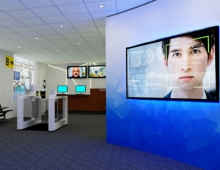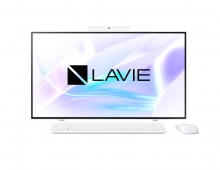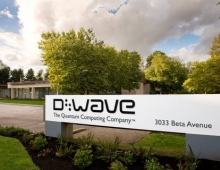
NEC Sharpens Image Quality With Super-Resolution ASSP
NEC Electronics today introduced a new application-specific standard product (ASSP) that enhances the image resolution of today's audio-visual (AV) display systems.
Based on the company's single-frame super-resolution technology, the low-power ASSP (part number uPD9245GJ) addresses the challenge of how to show low-resolution images on new high-definition electronic products. The SoC can be installed between the graphics processor and the display IC of a device.
NEC claims that the ASSP reduces the blurring that occurs when low-resolution images are expanded and displayed in high-resolution. It also sharpens out-of-focus images, smoothes rough edges and refines contours by analyzing and processing information contained in one frame of data in real time.
The technology enables very high-resolution processing with just one frame of image data. Reducing the processing load eliminates the need for expensive, external high-capacity memory, such as double-data-rate (DDR) SDRAM, thereby reducing cost and power consumption, and simplifying connections to existing systems.
The technology enhances image data from quarter video graphics array (QVGA) resolution (320 x 240 pixels) to wide VGA (WVGA) resolution (800 x 480 pixels) for clear image display on mobile phones and car navigation systems. The technology also achieves crisp images in 1920 x 1080-pixel high-definition (HD) television broadcasts by boosting image data in the 640 x 480-pixel VGA format ordinarily used for TV broadcasts and DVD storage to 6x the resolution.

NEC said that the new ASSP can be easily intergated into a variety of consumer, industrial, medical and automotive devices that handle images and video. Other possible application uses for the new ASSP include shooting photos and video on lower-resolution digital cameras and other devices, and for playing them back as high-resolution images, enabling users to capture more images using the same amount of memory. For example, if one gigabyte of memory is used, NEC super-resolution technology allows about 34 minutes of video to be shot in a standard four-megabyte resolution mode, which would be similar to a 17-minute video shot using an eight-megabyte high-resolution mode.
The technology is also available as an intellectual property (IP) core that can be embedded into ASICs or other ASSP products.
NEC plans o continue developing next-generation super-resolution ASSPs with increased operating frequency and expanded video output size, and by 2010, the company expects to receive orders totaling more than US$110 million for super-resolution products.
NEC claims that the ASSP reduces the blurring that occurs when low-resolution images are expanded and displayed in high-resolution. It also sharpens out-of-focus images, smoothes rough edges and refines contours by analyzing and processing information contained in one frame of data in real time.
The technology enables very high-resolution processing with just one frame of image data. Reducing the processing load eliminates the need for expensive, external high-capacity memory, such as double-data-rate (DDR) SDRAM, thereby reducing cost and power consumption, and simplifying connections to existing systems.
The technology enhances image data from quarter video graphics array (QVGA) resolution (320 x 240 pixels) to wide VGA (WVGA) resolution (800 x 480 pixels) for clear image display on mobile phones and car navigation systems. The technology also achieves crisp images in 1920 x 1080-pixel high-definition (HD) television broadcasts by boosting image data in the 640 x 480-pixel VGA format ordinarily used for TV broadcasts and DVD storage to 6x the resolution.

NEC said that the new ASSP can be easily intergated into a variety of consumer, industrial, medical and automotive devices that handle images and video. Other possible application uses for the new ASSP include shooting photos and video on lower-resolution digital cameras and other devices, and for playing them back as high-resolution images, enabling users to capture more images using the same amount of memory. For example, if one gigabyte of memory is used, NEC super-resolution technology allows about 34 minutes of video to be shot in a standard four-megabyte resolution mode, which would be similar to a 17-minute video shot using an eight-megabyte high-resolution mode.
The technology is also available as an intellectual property (IP) core that can be embedded into ASICs or other ASSP products.
NEC plans o continue developing next-generation super-resolution ASSPs with increased operating frequency and expanded video output size, and by 2010, the company expects to receive orders totaling more than US$110 million for super-resolution products.





















